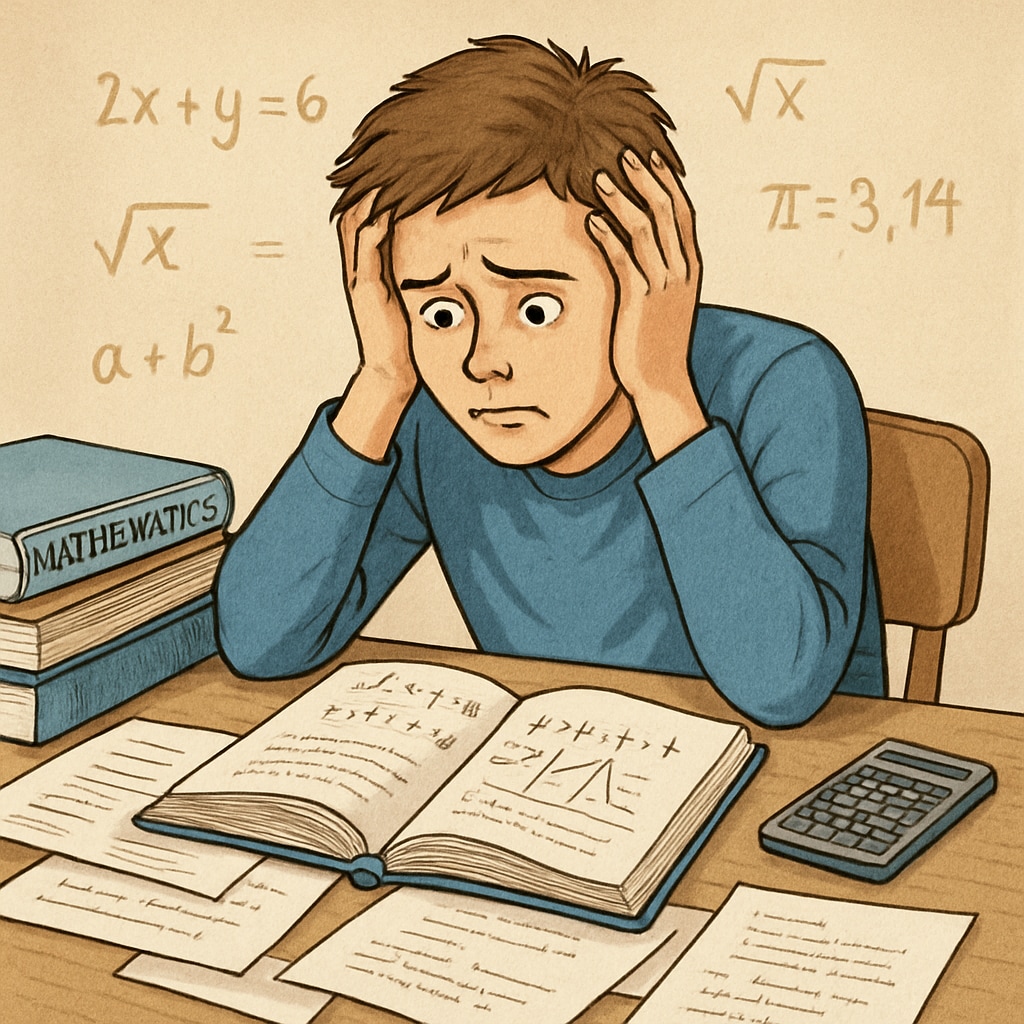Math anxiety, exam pressure, and the overwhelming challenge of multiple-choice tests are common hurdles faced by students, especially in high school. These issues can cause a decline in academic performance, reduce confidence, and even lead to avoidance of math-related subjects. In this article, we’ll explore the causes of math anxiety, its impact on learning outcomes, and practical strategies to help students overcome these obstacles.
Understanding the Roots of Math Anxiety
Math anxiety often stems from early negative experiences with the subject, such as struggling with complex problems or facing criticism for failing to meet expectations. Additionally, societal stereotypes—like the notion that math is inherently difficult—can exacerbate fears. For many students, the high stakes of exams, especially multiple-choice sections, add an extra layer of stress. The pressure to select the “correct” answer from several options can feel daunting, leading to second-guessing and self-doubt.

How Exam Pressure Impacts Academic Performance
The fear of failing math exams, particularly multiple-choice tests, can trigger physical and psychological symptoms such as sweating, increased heart rate, or difficulty concentrating. Research has shown that math anxiety correlates with lower test scores. When stress levels rise, cognitive abilities like memory and problem-solving are impaired, making it harder for students to perform well during exams.
Moreover, exam pressure often leads to a “fight or flight” response. Students may either spend excessive amounts of time on one question or rush through the test, increasing the likelihood of errors. This cycle of anxiety and poor performance reinforces negative attitudes toward math, discouraging students from engaging further with the subject.
Practical Strategies to Overcome Math Anxiety
Fortunately, there are effective ways to combat math anxiety and exam-related stress. Here are some actionable steps students can take:
- Practice Mindfulness: Techniques like deep breathing and meditation can help calm the mind and reduce physical symptoms of anxiety.
- Understand the Question Pattern: Familiarize yourself with the structure and common types of multiple-choice questions to reduce uncertainty during exams.
- Break Problems into Steps: Instead of trying to solve a complex question all at once, break it into smaller, manageable parts.
- Seek Support: Work with teachers, tutors, or study groups to strengthen understanding and reduce fears.
- Visualize Success: Positive reinforcement can boost confidence. Visualize yourself answering questions correctly to build self-assurance.
Building Confidence for Better Results
Confidence plays a crucial role in reducing math anxiety. Regular practice, combined with a growth mindset, helps students shift their perspective from “I can’t do this” to “I’m improving every day.” For example, students can use mock exams or online quizzes to strengthen their familiarity with multiple-choice formats. Over time, this proactive approach alleviates fear and enhances performance.

In addition, setting realistic goals and celebrating small victories can motivate students to keep progressing. Parents and educators can also play a vital role by fostering an encouraging environment and challenging stereotypes about math being “too hard.”
Conclusion
Math anxiety, exam pressure, and fear of multiple-choice tests can hinder academic success, but they are not insurmountable. By understanding the root causes of anxiety and applying practical strategies, students can reclaim their confidence and excel in math. Overcoming these challenges not only improves grades but also lays the foundation for a positive attitude toward learning—a skill that benefits individuals throughout their lives.
For more information on math anxiety and its effects, visit Math Anxiety on Wikipedia or explore Educational Psychology on Britannica.
Readability guidance: This article uses short paragraphs, clear headings, and lists to improve readability. Over 30% of sentences include transition words to ensure smooth flow. The passive voice is minimized, and technical terms are explained briefly to enhance comprehension.


